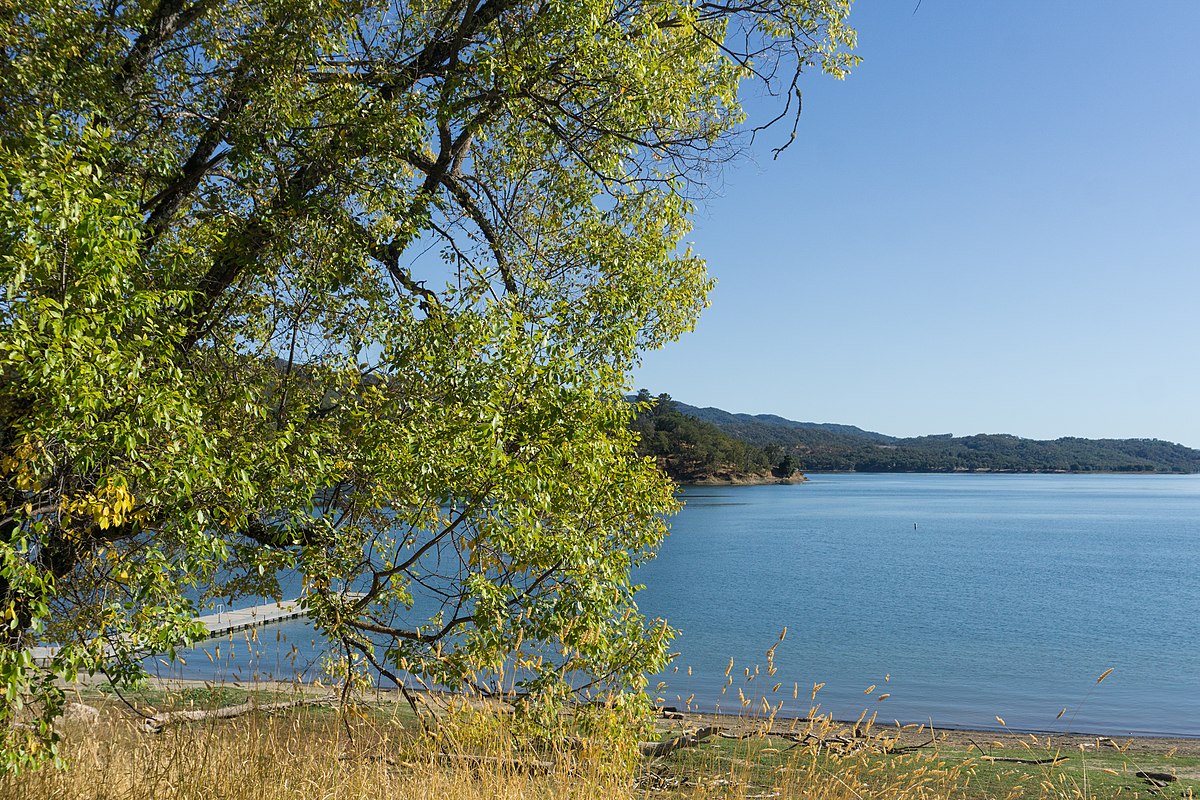
The water reservoir at Lake Mendocino in California, United States, served as a case study for how water reservoir operators followed the rules, to the letter or by using previous experience to lead their decisions.
Credit: Alexey Komarov
Featured Research
Adjusting for human bias when building water reservoirs
Preconceived ideas and previous experiences can change how water reservoir operators adapt to changes. A new study examined if operators were more likely to follow the rules to the letter or let past experiences help dictate their actions, whether consciously or subconsciously. They found that it was most likely that operators would let past events influence operations, which could lead to issues. In a case study from California, researchers found that years of drought led the operators to adjust to their usual water levels and left the reservoir at risk of flooding as a result. By knowing how operators may react to weather events, policies can be implemented to allow for these adjustments while planning to mitigate the potential unintended consequences. [Water Resources Research study]
Storm systems can create clouds over a hemisphere away
Cirrus clouds are those light, wispy clouds made entirely of ice crystals. There are two types of cirrus clouds, anvil and situ, and it can be difficult for modeling to tell them apart. A new study separated the two clouds by investigating what caused the clouds to form. Anvil cirrus clouds form from storm systems in their own hemisphere. In contrast, powerful storm systems in one hemisphere can generate huge waves in the atmosphere that cause situ cirrus clouds to form in calm skies across the equator in the other hemisphere. This distinction can help future models better predict how global warming impacting storms patterns will affect weather even hemispheres away. [AGU Advances study] [Eos editors’ highlight]
How algae helped some life outlast extinction
Cooler waters near Norway’s north provided a refuge for phytoplankton during the Great Dying around 252 million years ago when 81% of marine life died out. A new study found fossilized biomarkers that leave hints that something, most likely a type of phytoplankton, was alive in the cold waters around Svalbard after the Great Dying. These organisms likely fled volatile waters elsewhere as their biomarkers were largely absent before the extinction. [AGU Advances study][Eos research spotlight]
Excessive ocean alkalinity enhancement could warp some phytoplanktons’ shells
Adding alkaline materials like limestone or basalt to the oceans could chemically increase their capacity to absorb planet-warming carbon dioxide from the atmosphere — yet how this strategy will impact marine life remains uncertain. Researchers in a lab tested how this process impacted coccolithophores, tiny shell-building plankton that absorb carbon and provide nutrients for other marine life. As the rate of carbon entering the water rose with alkalinity, they found the coccolithophores used the extra carbon to photosynthesize and grow faster. However, the faster they grew, the less time and carbon they had to properly build their shells, resulting in malformed shells. This may imply an upper limit on how much alkalinity enhancement is safe for marine ecosystems, the researchers write. [JGR Biogeosciences study]
Croplands may face threat of saltier soils as climate change amplifies droughts
Besides reducing water available for crops, drought can also make soil saltier, as evaporating water leaves behind its salt content in the upper layers of soil where farmers grow their crops. Nearly 15% of the world’s soils have gotten significantly saltier from 1980 to 2018, researchers have found. The trend is closely linked to more severe soil droughts: droughts lasting over six months play a major role turning un-salty soils salty, as occurred in nearly 7% of the world’s dry regions in the past 39 years. Salinization lowers soil fertility, which hampers crop growth, and degrades soil structure, making soil restoration more difficult. [Geophysical Research Letters study]
A new way for coastal planners to explore the costs of rising seas
A framework featuring a range of plausible future sea level rise scenarios could help coastal planners prepare critical infrastructure. [Earth’s Future study][Eos research spotlight]
The invisible brake: near‑surface cooling stalls giant dyke swarms
Sill-based pressure reconstructions show Mull’s giant dykes had eruption-capable pressures, but near‑surface groundwater cooling increased magma viscosity and stalled lateral propagation. [JGR Solid Earth study][Eos editors’ highlight]
Taking carbon science out of orbit
NASA’s Orbiting Carbon Observatory-2 satellite reveals an impressively dynamic picture of Earth’s carbon cycle, yet it may be prematurely decommissioned and destroyed due to budget cuts. [AGU Advances commentary][Eos editors’ highlight]